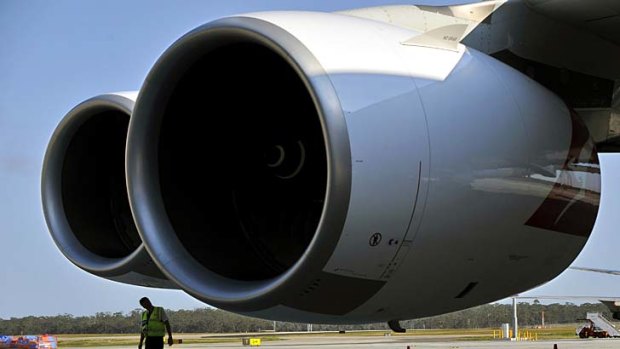This was published 10 years ago
The airline industry's big sham: fuel surcharges

Breaking airfares down into fake components, including the 'fuel surcharge' is a cheap trick designed to blame the airline?s operating costs on suppliers.Credit: Craig Abraham
It’s an obscenity that airlines continue the sham of fuel price surcharges in an underhanded attempt to blame the oil companies for their biggest operating cost.
The fact that the oil industry’s products exist in a global market completely devoid of price competition is a separate issue that has vexed competition regulators for decades.
But airlines have created a rod for their own back and a major faultline with their customers in insisting on a phony regime that appears primarily designed to punish frequent flyers – the one group of customers the airlines can’t afford to annoy.
Frequent flyers have been treated like dirt for the past decade as the airlines continue to roll back the value of loyalty to the point where it’s almost cheaper to shop around for a fare rather than accept a “free” flight redemption.
The centrepiece of the cost of a frequent flyer redemption is now the fuel “surcharge”, which has kept rising even though fuel prices are now falling.
Since discount fares rise and fall according to market demand, it’s only frequent flyers who get slugged with fixed, published surcharges when they come to redeem their benefit.
Since discount fares rise and fall according to market demand, it’s only frequent flyers who get slugged with fixed, published surcharges when they come to redeem their benefit.
It’s intensely annoying to the boss of Australia’s biggest travel retailer, industry veteran Graham Turner of Flight Centre, who has called for airlines to reduce their fuel surcharges in response to falling global oil and jet fuel prices.
“At the very least, surcharges should be lowered immediately,” Mr Turner says. “I stress the word ‘should’ because history has shown that airlines have been much more likely to increase surcharges than they have been to decrease them in response to fluctuating oil prices.
“A more sensible approach would be to remove these complicated surcharges entirely and to treat fuel in the same way as other operating expenses are treated by simply incorporating it into this base fare.
“This would create a much simpler fare structure and it would also benefit members of the various airline reward programs, as members are often required to pay the airfare’s fuel surcharge component when they redeem points for travel.
“This can represent a significant expense, as in some instances fuel surcharges are now higher than the airlines’ base fares.”
Turner quotes the example of a return low season Qantas fare to London being promoted by Flight Centre that is priced from $1809 from Sydney.
The price includes a $760 fuel surcharge, a $728 base fare and $321 in taxes. “In this instance, the actual base fare only represents 40 per cent of the ticket price,” Turner points out.
In fact, breaking the fare down into fake components is a cheap trick designed to blame the airline’s operating costs on suppliers. Many of the “taxes”, for instance, aren’t government charges at all, but airport levies – which in Australia at least tend to be very high.
According to Turner, Air New Zealand does not apply a fuel surcharge and Emirates has a relatively small fee, but many other carriers are charging travellers hundreds of dollars in extra charges.
British Airways ($763), Malaysia Airlines ($590), Virgin Atlantic ($580), Singapore Airlines ($571) and Cathay Pacific ($532) charge more than $500 in fuel surcharges on a return flight from Australia to London.
According to Flight Centre, airlines introduced small fuel surcharges in 2004 after oil prices topped $US40 per barrel. Since then, oil prices have more than doubled.
But, says Turner, many airlines have increased fuel surcharges at a significantly higher rate.
He says Qantas’s current $760 surcharge on a return flight to London is more than 12 times its initial surcharge of $60.
The surcharge has not decreased since March 2009, with the last five movements being increases, he says.
Those increases saw Qantas’s fuel surcharges to London quadruple between February 2011 and March 2012.
Singapore Airlines introduced a $US20 surcharge on return flights to London in June 2004. Today’s surcharge – $US520 – is 26 times that amount.
Removing surcharges wouldn’t make airfares any cheaper; it would simply end the marketing charade that attempts to apportion blame for them to outsiders.
As I have pointed out many times, the airline business is one of the least profitable in the world and often represents the best bang for your buck in the consumer market.
The industry, in my opinion, is needlessly getting its customers offside in using trickery and sharp practices on surcharges.
What is the biggest “surcharge” you’ve come across? Do you think they are justified? Have surcharges affected the way you look at frequent flyer benefits?
Sign up for the Traveller Deals newsletter
Get exclusive travel deals delivered straight to your inbox. Sign up now.